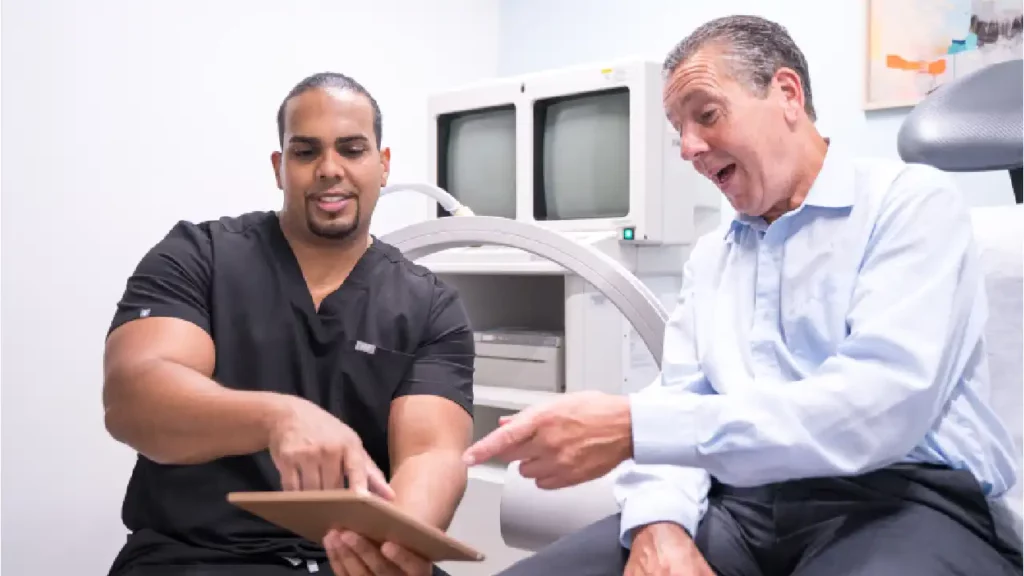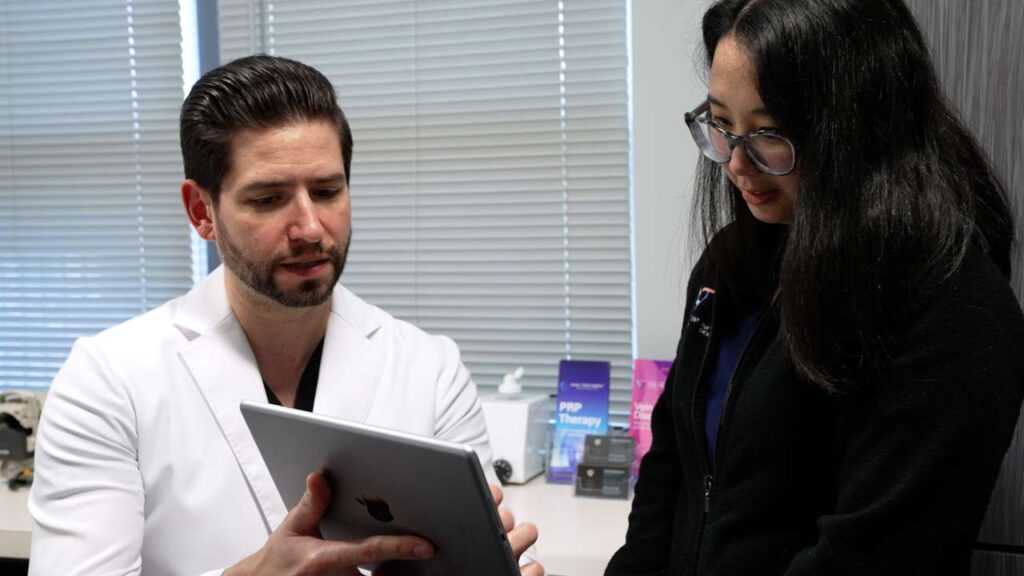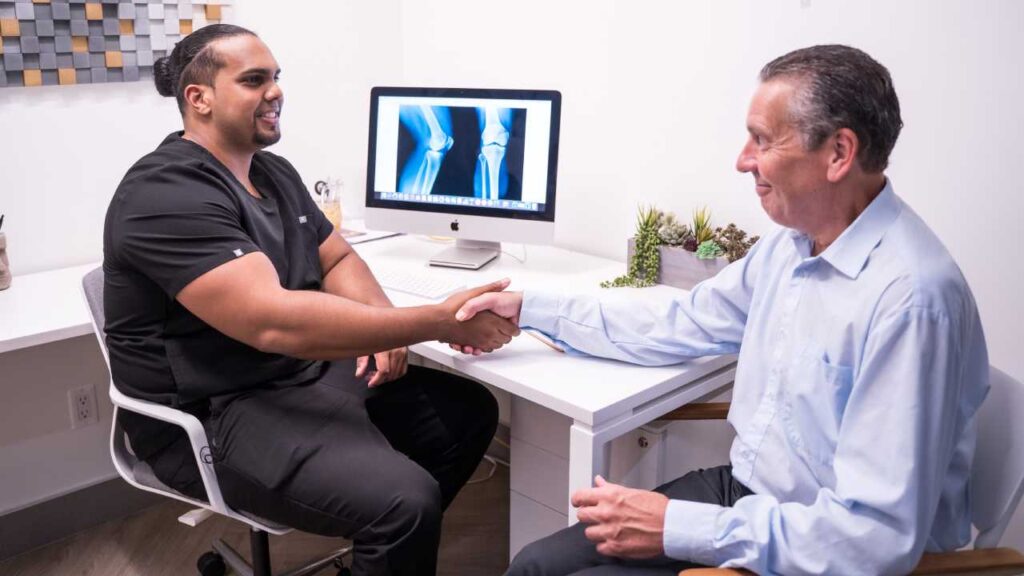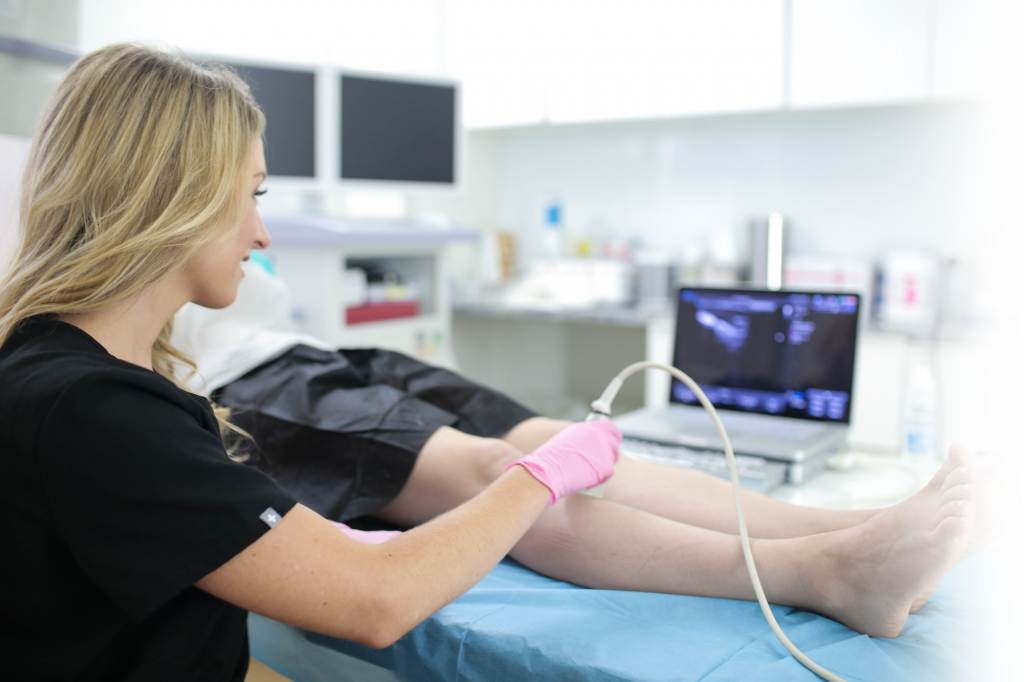What Causes Weak Valves and Thick Veins in Your Legs?
Before learning how weak valves in leg veins impact your health, it’s helpful to know why weak valves occur. Leg veins are tasked with pumping blood from the feet all the way to the heart to collect oxygen to distribute throughout the body. They’re lined with tiny valves that close once blood passes through, to prevent blood from flowing in the opposite direction. When valves in your veins weaken, they allow blood to pool and reverse through the vein, elevating pressure on vein walls, which creates the thick varicose veins and thin spider veins you see at the surface of your skin.
Factors like aging, obesity, genetics, hormones, and sitting or standing too long impact valve failure. But the most common reason for weak valves is a prevalent disease called Chronic Venous Insufficiency (CVI). This condition is underdiagnosed and causes a host of frustrating and potentially debilitating symptoms you’ll learn more about below. Click HERE for a vein valve assessment at our award-winning New Jersey vein center to protect both your vascular and overall health.
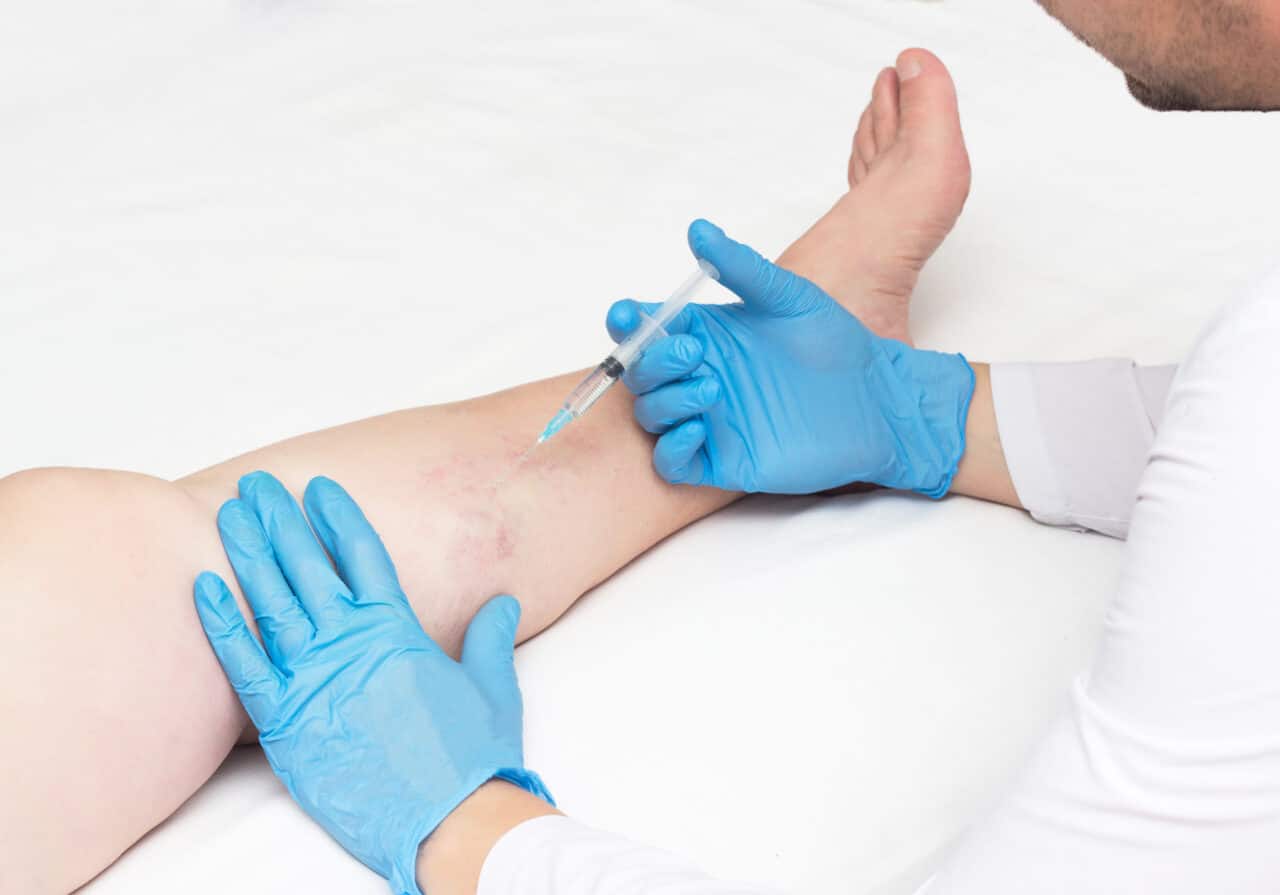
Do Valves Cause Varicose Veins & Broken Capillaries on Legs?
While weak valves aren’t the only cause of varicose veins, spider veins, and broken capillaries on legs, they are the most likely one. Broken capillaries on the face might stem from sun damage, or injury (squeezing a pimple or using harsh exfoliants). But when vein damage occurs in the legs, it’s typically caused by valve failure deeper in the vein. Since leg veins must work against gravity and pump blood a great distance, the valves in your legs are more prone to weakening over time.
In addition, leg veins are protected by more fat and tissue than facial veins are, so they’re less susceptible to external injury, and more susceptible to internal circulation issues. If you see spidery veins developing in clusters on your legs, or rope-like veins bulging in your legs, there’s a high likelihood weak valves are to blame.
Do All Thick Veins in Upper Thigh Signify Weak Valves?
Not all thick veins are caused by weak valves, but when you see them in your legs, there’s a high probability valves are involved. Sometimes thick veins are the result of changes in temperature, exertion, or hormones, rather than a broken valve. For instance, if your forehead veins or arm veins look thicker after exercising, showering, or sunbathing, that could be a natural stretching of the vein to accommodate more blood flow as your heart rate increases.
If the vein is not tortuous and it shrinks in size once the causative factor is removed, it might not be a varicose vein. However, it’s best to let a qualified vein specialist make that distinction. Our Harvard-trained, New Jersey vein doctors use duplex ultrasound technology to examine deeper veins for valve failure to distinguish between thick veins and varicose veins.
Do Weak Valves and Veins Popping Out on Legs Affect Health?
Weak valves and veins popping out on your legs have the potential to damage more than your skin’s appearance. They can also cause symptoms like leg swelling, itching, fatigue, heaviness, cramping, restlessness, and hyperpigmentation. Left untreated, they can generate venous ulcerations, venous stasis dermatitis, and profuse bleeding with an abrasion. Some patients also develop blood clots, including life-threatening ones like a deep vein thrombosis that breaks loose and causes a pulmonary embolism. Our patients are frequently shocked to learn how many of their health symptoms are caused by weak valves in their veins.
Do Weak Valves Impact Varicose Veins Stages and Severity?
Many patients with untreated CVI continue to develop more spider veins, varicose veins, and progressive symptoms. In the early stages, varicose veins might be asymptomatic or produce mild itching or heaviness in the legs. But unless the valve is treated, blood will continue to pool in the vein beneath the valve, producing visible damage, as well as advanced symptoms for many patients. Surface treatments, like those provided by cosmetic and dermatological centers, don’t correct the valve issue that’s causing spider veins and varicose veins. See a board certified vein doctor in New Jersey for effective care for weak valves in leg veins.
Does Varicose Veins or Spider Veins Treatment Repair Valves?
Some vein treatments address underlying valve issues, and others only repair the visible damage at the surface. Successfully treating varicose veins and spider veins in the legs often requires treating a faulty valve. If your superficial vein damage is caused by valve failure in deeper veins, surface treatments will only provide temporary results. Eradicating weak valves is key to long-term results, since venous reflux will persist and create more telangiectasias and varicosities.
What Can Get Rid of Varicose Veins and Weak Valves?
There are several ways to get rid of varicose veins and weak valves, including surgical removal and minimally invasive procedures that treat the vein within the body. The latest, less invasive treatments are preferred over surgery because they are gentler, safer, and ultimately more effective for the majority of patients. They also reduce factors like discomfort, side effects, cost, and downtime, enabling patients to resume their usual activities quickly. Learn about your best options below.
What’s the Best Treatment for Varicose Veins in Legs & CVI?
The top 5 treatments our NJ vein doctors recommend for varicose veins and CVI are sclerotherapy, radiofrequency ablation, vein adhesives, mechanochemical ablation, and endovenous laser ablation. Each of these are performed with tiny needles, catheters, or fibers inserted through the skin, so they are minimally invasive. These don’t involve large incisions, general anesthesia, or hospitalization, and there is no downtime required. In fact, most patients head straight back to work and their usual routine. The best of these 5 methods depends on your unique medical history, symptoms, and preferences, so book your consultation today!
Red Veins on Legs: Does Getting Rid of Them Involve Valves?
Like varicose veins, red spider veins and broken capillaries are often the result of valve weakness, especially in the legs. Our vein specialists can conduct a duplex ultrasound analysis of the veins you can’t see from the surface to select the best vein treatment. While surface lasers and sclerotherapy for saphenous veins can reduce the visibility of some red veins, if the source is a malfunctioning valve, cosmetic repairs won’t suffice.
Is Every Engorged Vein Treatment Safe for Weakened Valves?
Today’s minimally invasive vein treatments have an excellent track record of safe and successful repairs. The risks with these procedures are much lower than with vein stripping surgery, for most patients. However, some patients with a history of blood clots are better suited to surgical extraction. To optimize the safety of your procedure, choose the board certified vein doctors at our accredited vein center in New Jersey, so your treatment approach is customized specifically for you.
Is Varicose Veins Pregnancy Treatment Advised?
Most people can safely undergo vein treatment. But pregnant patients are advised to wait until after delivery, since treatments are injected into the bloodstream that supplies the fetus. Varicose veins and spider veins are common during pregnancy, so book your consultation now to devise the treatment plan we’ll administer after delivery. We’ll offer suggestions for temporary symptom improvement, including compression stockings and leg elevation, until you’re cleared for treatment.
Do Men Get Varicose Veins and Valve Failure Too?
More women than men experience varicose veins and valve failure, in part because hormone shifts from pregnancy, menopause, and birth control increase endovenous pressure. But varicose veins are common in men as well, and equally problematic. Men whose job involves long periods of sitting or standing, such as commercial drivers, professors, doctors, and security guards, are particularly at risk. Vein issues run in families so there is also a strong genetic component for male patients.
What’s the Best NJ Vein Center for Weak Valves in Leg Veins?
The best NJ vein center for weak valves in leg veins is one that is run by board certified vein specialists and offers minimally invasive, yet comprehensive vein care. Doctors who specifically studied venous medicine and are trained in the latest techniques, including duplex ultrasound imaging to identify weak valves, provide the best solutions for your veins. Don’t agree to cosmetic or surgical repairs, until you’ve consulted our minimally invasive vein specialists in Clifton, Paramus, Woodland Park, or Woodbridge. We look forward to meeting you!
